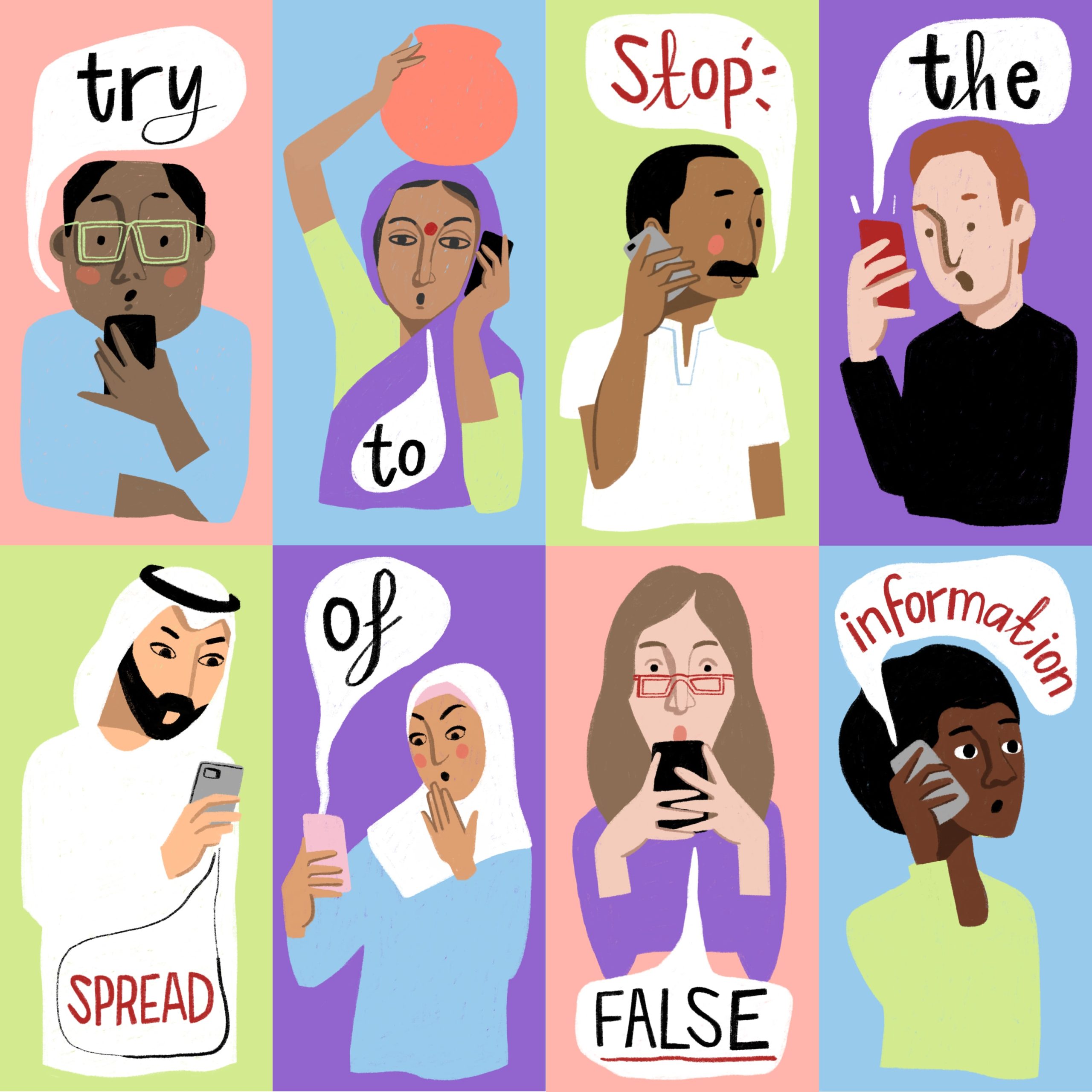Fake news: the third-person effect
Author: Martha Villabona works at Subdirección General de Cooperación Territorial e Innovación Educativa of the Spanish Ministry of Education and Vocational Training, where she coordinates the area of multiple literacies.

The third person effect phenomenon was described by Davidson in 1983 1. People tend to think that media influence other people more than themselves. This self reinforcement is a key mechanism to understand the different effects caused by the media on their audience, since people are motivated to maintain a positive image of themselves by experience their competence to recognize what is false from what is true in front of others. In addition, individuals are more resistant to attempt at persuasion that may produce a negative effect. At this time, Davidson was referring to the information provided by a traditional media such as radio, press and television.
Since the existence of digital media, social networks have facilitated substantially the process of information exchange and knowledge construction. They are also the fertile ground for the creation and propagation misinformation, specially dangerous for political debate in a democratic society. The number of online readers, views and actions such as sending a “like” in an article, are important keys that users utilize to confirm their credibility and reliability of online news and products.
There is a demand for media literacy. This is the ability to access, analyse, evaluate and create media in a variety of forms. This implies that people are able to assess the credibility of information circulating on social networks. The number of information sources and the tendency of people to follow like-minded people lead to the creation of echo chambers and filtering bubbles that increase polarization. If there is no contradictory information to counteract falsehoods or general consensus within isolated social groups, the result is a shared reality that can be dangerous to society.
In 2019 there was a survey distributed in the US asking about the “self-ability” to recognize misleading o inaccurate information provided by the media. More than 50% of participants responded they relied more on their own ability to recognize such information than on the ability of the general public to distinguish it. Based on these result, it would seem that distributing false o fake news might not be a problem, but it is.
There are studies looking at the effect of third person on social networks and media literacy intervention. Studies focused on whether the effects of false news are greater in different political groups than among members of the same group, and whether the individuals accepted media literacy interventions 2 . To test these hypotheses, the investigators surveyed 1299 Americans asking them a variety of questions. These were about: the exposure and influence of the false news on themselves and on political groups (Democrats and Republicans); the undesirable effects of a false message on themselves and others and their political identity on a 7-point scale; or the effect of media literacy. On this last issue they had to evaluate three statements: is it important that media users be taught to analyse media messages?, b) is it important that media users be taught to recognize false or misleading information in the media?; and c) Is it important that media users evaluate media information critically?
They found that the older participant was a greater perception of the third person. Republicans voters believed that Democrats were more influenced by false news than Democrats did about Republicans. Subjects with a greater partisan identity within their group showed greater disparity among themselves, as they saw themselves more vulnerable to the exposure of false news than other members of their party. Another interesting finding was that those with higher levels of third person perception was not in favour of regulating false news. Despite these results, participants were in favour of media literacy intervention as it minimizes the harm of false news.
In another study of the effect third person 3, 9150 individuals were asked if they believed that the information on the number of users who are online with them on the same website, you can influence them, their Friends and others. The result was that the “I” was the least influenced. The same was the case when they were asked whether information about the number of users who had to read an article could influence themselves, their friends and others. The “me” option turned out to be the least influenced. However, all users felt that the source of an online article influenced everyone in the same manner.
In conclusion, and base don these findings, there is a “third person effect” phenomenon in digital media, and it should be a call in action to adopt and incorporate media literacy interventions to support education to the audience in this field besides some degree of regulation of media content to minimize negative effects of fake news.
References
- Davison, W. P. (1983). The third person effect in communication. Public Opinion Quaterly, 47 (1), 1-15. ↩
- Jan S. M., Kim J. K. (2017) Third person effects of fake news: Fake news regulation and media literacy interventions Computers in Human Behavior, doi:10.1016/j.chb.2017.11.034. ↩
- Antonopoulos, N., Veglis, A., Gardikiotis, A., Kotsakis, R., & Kalliris, G. (2015). Web third-person effect in structural aspects of the information on media websites. Computers in Human Behavior doi: 10.1016/j.chb.2014.11.022 ↩
3 comments
[…] manipulatzeko baliatzen da hori eta benetakoak ez sinesteko. Dokumentaturik dago mekanismoa: Fake news: the third-person effect, Martha […]
[…] original: Fake news: the third-person effect. Martha Villabona, Mapping Ignorance, 16 de noviembre de […]
[…] Martha Villabona. (2020, November 16). Fake news: The third-person effect. Mapping Ignorance. Retrieved April 3, 2023, from https://mappingignorance.org/2020/11/16/fake-news-the-third-person-effect/ […]